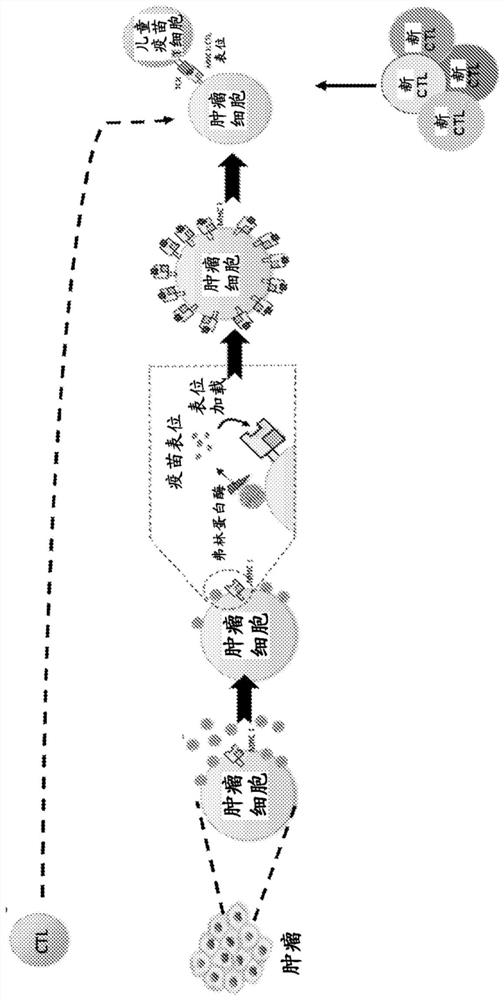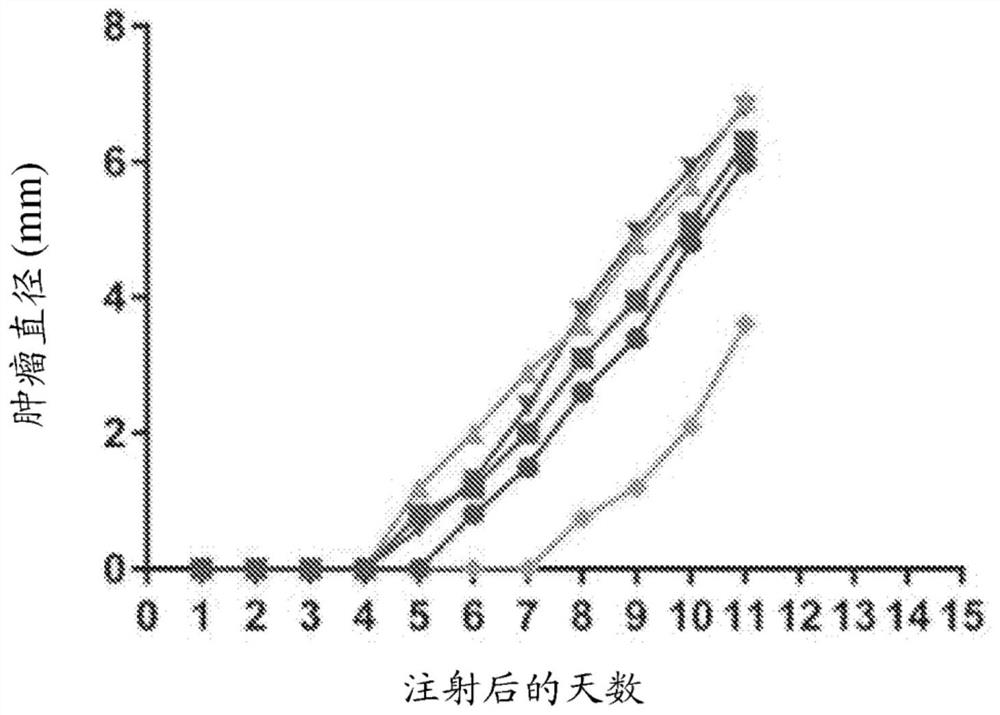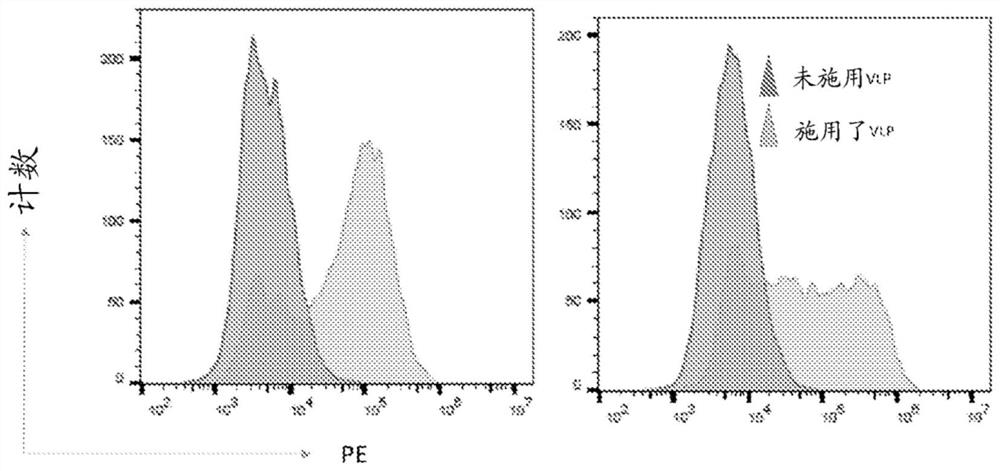Conjugated virus-like particles and uses thereof as Anti-tumor immune redirectors
A virus-like, conjugated technology, applied in the direction of anti-tumor drugs, viral antigen components, viruses, etc., can solve the problems of high cost development channels and high medical expenses
- Summary
- Abstract
- Description
- Claims
- Application Information
AI Technical Summary
Problems solved by technology
Method used
Image
Examples
Embodiment 1
[0177] Conjugated VLPs bind to mouse tumors in vivo
[0178] The ability of the described conjugated VLPs to bind tumors is an important first step in the proposed mechanism of action (see figure 1 ). In vivo binding of VLPs was assessed using the murine cervical carcinoma model TC-1. Briefly, unconjugated VLPs were expressed in Expi293F TM Expi293F was used in human cells (ThermoFisher Scientific, Waltham, MA, US) TM produced by the expression system. In this protocol, 360 × 10 6 cells. Afterwards, to express HPV16L1 VLPs, cells were transfected with HPV16 L1 gene expression vector (Catalog No. 89910, Addgene, Cambridge, MA, US) via the manufacturer's protocol (ThermoFisher Scientific, Waltham, MA, US). Transfected cells were maintained for 72 hours before harvesting. HPV particles were released from Expi293F cells by detergent lysis, and the lysates were incubated overnight at 37°C with mild detergents such as Brij58 or Triton X-100. VLPs from overnight incubation ly...
Embodiment 2
[0184] Conjugated VLP binding to human tumors in vitro
[0185] To test the ability of conjugated VLPs to bind to human tumors in vitro, five human tumor cell lines will be evaluated: OVCAR3, MDA-MB231, HCT116, PC-3 and SKOV3 (ATCC, Manassas, VA, US). Each cell line was first seeded in one well of a 6-well plate. After 16-24 hours, cells will be dissociated using 0.05% trypsin. Cells were then counted to obtain 1 x 10 6 cells, centrifuged, and the supernatant removed, then resuspended in 100 μL of FACS buffer (1% FBS in PBS). Next, 0.3 μg / mL of conjugated VLPs was added to the respective cultures in vitro, and these cultures were incubated for 24 hours under optimal growth conditions. To demonstrate that the binding is HSPG specific, conjugated VLPs will or will not be pre-incubated with heparin (final concentration 0.1 mg / ml) and incubated for 1 hour at 4°C (to prevent endocytosis). After 1 hour of binding, the cells will be washed twice with 1 mL of FACS buffer before be...
Embodiment 3
[0187] Conjugated VLPs bind to human tumors in vivo
[0188] The described conjugated VLPs will be further tested to assess their ability to bind human tumors in vivo. In the first experiment, mice will be injected with OVCAR3 tumor cells (3×10 6 cells). Approximately two weeks after injection, the average tumor volume is expected to be approximately 10mm 3 . Three weeks after injection, Cu 2+ or Zn 2+Radiolabeled VLPs. VLP biodistribution and tumor specificity will be assessed at 4 hours, 12 hours, 24 hours and 48 hours. Tumors were then removed for weighing, radioactivity counting, viral microdistribution, and cell colocalization. In addition to tumors, imaging methods as well as histology will be used to assess the presence of VLPs in various major organs (such as liver, spleen, kidney) to assess the efficacy of VLP homing to tumors. In further experiments, mice will be injected with other tumor cell lines, such as HCT116, PC-3 or SKOV3, and the same experimental pr...
PUM
| Property | Measurement | Unit |
|---|---|---|
| depth | aaaaa | aaaaa |
Abstract
Description
Claims
Application Information
 Login to View More
Login to View More - R&D
- Intellectual Property
- Life Sciences
- Materials
- Tech Scout
- Unparalleled Data Quality
- Higher Quality Content
- 60% Fewer Hallucinations
Browse by: Latest US Patents, China's latest patents, Technical Efficacy Thesaurus, Application Domain, Technology Topic, Popular Technical Reports.
© 2025 PatSnap. All rights reserved.Legal|Privacy policy|Modern Slavery Act Transparency Statement|Sitemap|About US| Contact US: help@patsnap.com



